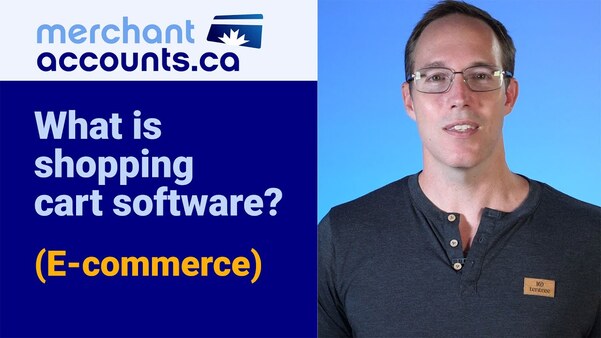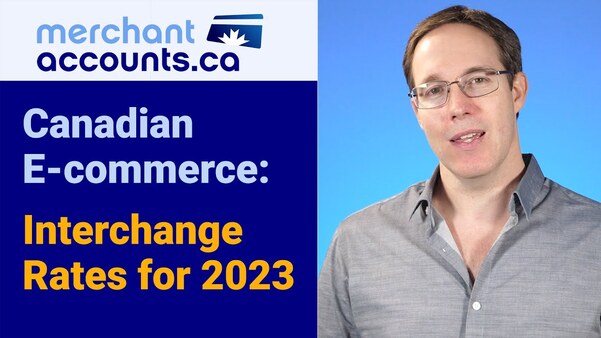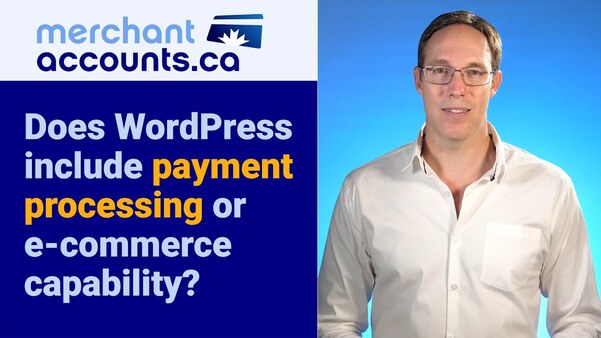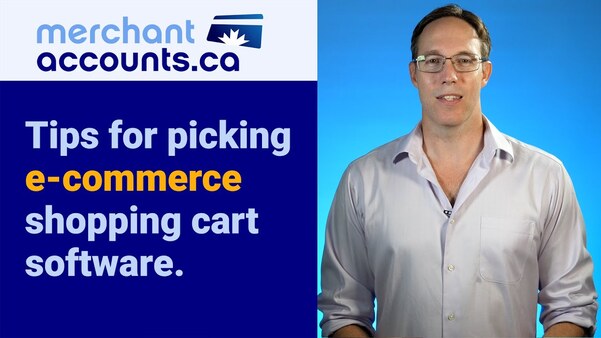Big Commerce Shopping Cart Review
June 30, 2011by David Goodale
Big Commerce is a cart that I have been hearing a lot about lately. In fact, we've had many clients calling in and asking if it's compatible with our service. (Yes, it is compatible). I decided that it was well past time since I've done a shopping cart review, so this past week I spent some time getting acquainted with Big Commerce.
At a Glance

The first thing you notice when you log into your Big Commerce administration panel is that the software is BIG. It might be overwhelming, if it were not laid out so well.
Pricing is always one of the first concerns that people have when choosing a cart, so I won't dilly dally and will drill straight into pricing. The software starts at about $25 per month (100 products), and goes up depending on the number of products in the catalog. The gold package is currently priced at $79/month with support for 1,000 products, which means the vast majority of businesses it will clock in well below the $100/month marker. From a price comparison perspective, it is neither the least nor most expensive cart out there, and is certainly competitive for the functionality that you will receive. There is a free two week trial period which will allow you to thoroughly test every aspect of the cart out before you buy.
First Steps
Immediately after logging in you are directed to a how-to video that gives you a run down of the different features and settings, in order to help you navigate the almost overwhelming number of options that are presented upon logging in. Despite the fact that the sheer number of options may be somewhat intimidating at a glance, the how-to video will have you off and running in short order. It won't take long to realize that most aspects of the software are presented in a meaningful and logical way, and it is easy to navigate once you figure out the basics.
After watching the introduction video, your attention is immediately directed to a 7 step walkthrough that will take you through each stage of getting your web store live. This 7 step approach ensures that you are never left wondering what to do next, and provides a reassuring overview of the steps involved.
Hands On
The first step to complete is to configure your basic store settings. This involves setting up the store name, contact information, and general display settings that determine how people interact with your website. (How categories are displayed, search functionality, items displayed per page, etc). These choices are not critical because you can always go back and edit these settings later on. Then comes the process of adding products to your catalog which is a relatively simple procedure of data entry and photo upload.
However, the first thing that I wanted to do was see how the store looked, and determine the extent to which I could customize the design. Big Commerce is a template driven cart and provides a large number of well designed templates to use as a starting point for any design. The color schemes are well thought out, and the designs are current and fresh. In fact, many merchants could probably choose one of the existing templates without need for any further customization, and their customers would be none the wiser.
Editing a template is possible, and there is a WYSIWYG based editor. The editor allows you to pull page elements around to different spots on a page, and if you right click on an element you are able edit the actual page code. Editing the code can be a bit confusing because there are many elements to the design, and it is not immediately obvious what module you need to edit in order to accomplish the desired effect. However, if you mess up can element it can be easily restored, so with a bit of trial and error a decent webmaster should be able to get in and modify code in any way necessary.
The interface is clean, simple and effective. Big Commerce is a web 2.0 cart and uses CSS pop layers to great effect. Product images will open up in a lightbox (a css poplayer) which means users can view larger images without leaving or re-loading the page, and you do not need to worry about popup blockers stopping a zoomed in version of an image from loading in a new window.
Similarly, when a user adds a product their cart it also uses a lightbox window to confirm the product has been added. This gives the user a choice to proceed to the checkout or continue shopping. It happens instantly within the browser window and is probably the single best (and least intrusive) way of asking a user what they want to do next after adding a product to their cart.
Lets Get Technical
Big Commerce has some important tools for power users. For example, they support import and export of product database options, which is especially important when moving a large database of products from one cart software to another. (So if you have an existing cart and want to start using Big Commerce, you shouldn't have to re-key your entire catalog database).
The cart can support fairly advanced tax and shipping logic, which includes real time shipping quote integration from FedEx, UPS, USPS and other courier services. Users will receive FTP access to upload and download files, and can access and manage DNS, store logs, robots.txt and redirects right through the control panel.
The cart also supports some search engine friendly customization options such as the ability to edit the title tag and insert meta tags (although meta tags are not as important to SEO as they used to be).
The URL structure is dynamic and not directly editable, but effort has been made to make them search engine friendly. The product name is used in the filename, and it is presented in a static appearing URL that can be easily spidered by google or other search engines.
Although you cannot upload your own static HTML pages to your Big Commerce account, you can create your own pages within Big Commerce using their WYSIWYG page editor. For this reason, you will likely require separate web hosting for the main area of your site, and the Big Commerce account will be dedicated to the specific task of hosting the store related pages of your website.
To list all of the features of the cart would be far beyond the scope of this article, but the software supports all of the standard features you would expect with any shopping cart, numerous additional tools. Some supported features include: discount code and gift card support, RSS syndication, product clearance discounts, and basic analytics including best sellers and conversion rate tracking.
It's a Big Job
No matter how well laid out and designed software is, when there is a large feature set with a high degree of flexibility it is inevitably going to be a bit overwhelming at first glance. It would seem that the folks at Big Commerce realize this because they have provided a staggering amount of support and resource material to draw from. There are how-to guides, twice weekly live webinars conducted by Big Commerce, live chat support, instruction videos, blog posts, a support website and a user forum. All this is in addition to old fashioned phone and email based support. In other words, there is no shortage of information to help you work through the process of getting your store live.
Interestingly enough, Big Commerce also provides a wealth of information related to building, growing and marketing an online business. It would seem they are quite in touch with the fact that a significant portion of their customers will be new to the e-commerce world, and have gone to great lengths to do more than just help get your store live. They want your store to be successful.
They have provided information in search engine optimization, social marketing, design advice, and numerous other tips and tricks that startup and small business owners will find very useful. This information isn't comprehensive by any means, but it's a fantastic starting point, and the fact that it's integrated so closely into the software is certain to be of great benefit to anyone building their first e-commerce business.
Summary
Despite spending a few good hours working through the software, I am left with the feeling of barely having scratched the surface.
When choosing a shopping cart, there is a always a trade off to be made between simplicity of use and a powerful set of features. Big Commerce has swung for the fences with a very robust feature set, and done a remarkable job of keeping it reasonably easy to navigate along the way. This is combined with an impressive number of instructional video's, how-to's, webinars and (generally speaking) more support than you can shake a stick at.
The cart is well suited to beginner users that are willing to put in their time, roll up their sleeves and wade into the options and features that Big Commerce offers. With that said, it's not a tool meant exclusively for beginners and startups. It is a very good fit for webmasters operating a small to mid-sized website, in particular when looking for a remotely hosted solution with a modern web 2.0 interface, that offers a strong degree of advanced functionality that can continue to be leveraged and built upon as a business grows.
Try It Out
The folks at Big Commerce offer a fully functional demo account. It will allow you to do an unrestricted test of the system for 15 days. You can find out more at www.bigcommerce.com.
Related Topics
March 29, 2022
E-commerce shopping cart software is what keeps track of the things that customers want to buy as they browse your website. In this discussion we explain what it is, and the things to be aware of when selecting a shopping cart software platform for your business.
December 01, 2022
If you're building an e-commerce website, you don't want to spend all that money and have it not work. That can actually be a legitimate fear too, because if your project is not well planned you could run into issues. In this video David explains the concept of shopping cart compatibility, and how the e-commerce software that runs on your website connects to your payment gateway.
February 14, 2023
David breaks down the current interchange rates for e-commerce merchants in Canada for 2023. These figures were taken directly from the Visa and Mastercard Canada interchange tables. These interchange rates apply not just to e-commerce transactions but also virtual terminal and other card-not-present type transactions.
May 02, 2023
Out of the box WordPress is not e-commerce capable. It needs special technology to enable e-commerce capability.and other card-not-present type transactions.
May 18, 2023
Do you want to understand how e-commerce works? David explains both the technical components, and also the most important business considerations when building an e-commerce business.
June 09, 2023
How do you choose the right shopping cart software when building an e-commerce website? If you choose incorrectly you might need to rebuild your website in the future. David shares tips on how to pick the right shopping cart software for your business.
Learn How To Lower Your Credit Card Processing Fees
If you haven't reviewed your processing costs in a while take a moment to view our rates.
View Rates








